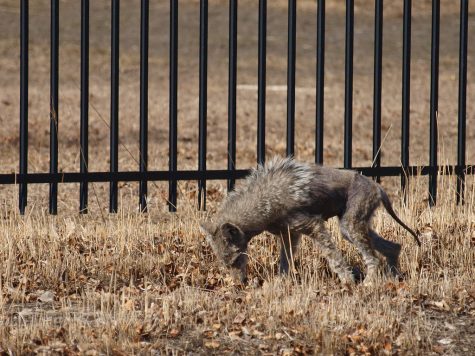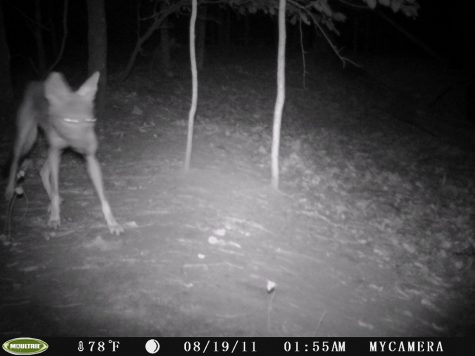Mysteries, Oddities, and Everything Strange: Chupacabra
November 19, 2021
Chupacabra: Latin America’s Cattle Gobbler
Imagine an honest farmer tending to his livestock in the rural fields of Mexico. Barely making a living off the few cows and chickens he owns, his crops and his animals are his pride and joy in life. Settling into bed after a long day of tending the fields, the farmer hears a commotion out in the fields, followed by the pained squeal ofa chicken. Horrified, he scrambles out of his bed and out the door to examine the noise. It was probably a bat, or even a cattle infight. Nothing out of the ordinary right? Well, the farmer enters his barn to discover something hulking over his chickens, biting them with its long snout and sharp teeth. The farmer chases the thing off and goes to examine his chickens, noticing the deep bite marks. The chicken is dead, and very dead at that, appearing as if all the blood it had was drained from its body. Looking around, the farmer finds that nearly all of his chickens have been marked by the beast, pale as can be. His chickens were all dead, killed by the beast of the night that had invaded his barn.

This was the story of countless American farmers as they detailed their experiences with the chupacabra, a beast that has terrorized livestock for decades. Its name comes from Spanish, with chupar meaning “to suck” and cabras meaning “goats” (literally, goat-sucker). First reported in Puerto Rico, the creature has been described as dog-like, with fur and a long snout, while others say it is more reptilian, with some going so far as to say it looks like an alien or a small bear. Reports have even surfaced in Russia, Chile, and the Philippines, terrorizing livestock all across the globe. Most of the traits of the chupacabra have remained a longstanding mystery, with a lack of official evidence being detrimental to its case.
Its first sighting was recorded in 1975, where a municipality in Puerto Rico known as Moca suffered multiple livestock deaths in rapid succession. The residents of Moca suspected the killings to have been performed by a cult, but similar animal deaths resulting in a complete loss of blood popped up all across Puerto Rico. 1995 saw the first witness of the beast, with 8 sheep bled dry and possessing nearly identical wounds. Countries like Brazil, Mexico, Panama, India, Peru, and even the United States have reported similar accounts of the creature’s wrath, with pets and other animals being knocked out left and right. The chupacabra has continued its reign of terror for decades since. But does it stack up when the evidence is examined?

The most well-known account comes from Madelyne Tolentino, who documented witnessing the creature in action. Her account describes an earless and hairy creature with a back like a stegosaurus lurking in her backyard. When she was asked to recount what she had seen, she had collaborated with a local conspiracy theorist to create a sketch, and from there many more reports surfaced. Is Tolentino’s account reputable? Well, the night she witnessed the odd being, she had watched a 1995 science-fiction movie known as Species, and her image bore suspicious similarities to Sil, a creature in that very movie. Other accounts have been determined to be canines, reptiles, and even infected coyotes. With the little evidence to support this creature, its hope for existence dwindles by the second.

But despite all this evidence negating the chupacabra’s existence, there is still hope for it. In May of 2019, a man captured photographic evidence of a creature that appeared similar to the chupacabra wandering around beside a highway. Texas is a hotspot for chupacabra sightings, and this happens to be one such example. Other than this, the chupacabra has been mostly debunked as human fear misconstruing natural phenomena.
Is the chupacabra a real figure terrorizing farmers across the globe, or is it just a collection of wild reptiles and canines? The goat-sucker, although mostly disproven, will likely persevere in pop culture, with its blood-sucking ways to be blamed for countless cattle deaths. Even if the chupacabra is just a myth, will we ever know what was truly responsible for the thousands of reported livestock deaths? What wild animal that we know of could formulaically wound animals, leaving nearly symmetrical wounds and a corpse entirely drained of blood? Until we can investigate more into the mysterious surrounding this animal-eater, for now, the chupacabra will remain a part of urban legends for decades to come.
Resources:
https://en.wikipedia.org/wiki/Chupacabra
https://abc7news.com/chupacabra-animal-legendary-creature-mythical/5305873/
https://www.texasobserver.org/chupacabra-legends-texas/
https://www.amnh.org/explore/ology/ology-cards/281-chupacabra






















































